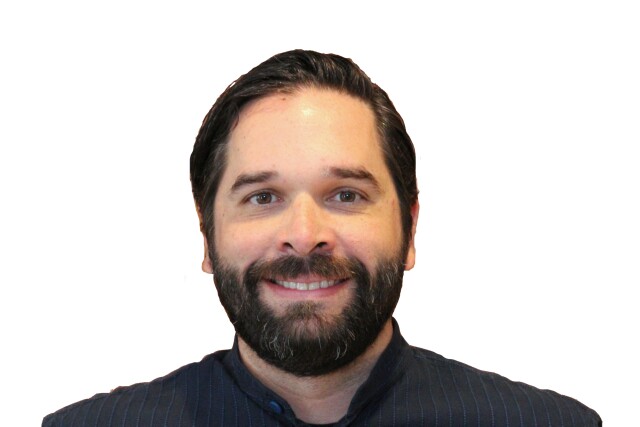Q&A: Publicis SE Asia on Automation, Programmatic and TV

The Summer of Sears comes to an end as Jay Sears, Senior Vice President Marketplace Development of Rubicon Project discusses “Automation, Programmatic and TV” with Stephen Tompkins of Publicis’ VivaKi in SE Asia. The two executives appeared at Rubicon Project’s 2nd Annual Real Time Trading Update from SE Asia's Buy Side in Bintan, Indonesia in July 2015.
This is the final interview in a four-part series. Be sure to read Sears' interviews with Yean Cheong of IPG Mediabrands' Cadreon in SE Asia, Anna Chan of Dentsu Aegis' Amnet Asia andMichel de Rijk of Xaxis.
Your Name:Stephen Tompkins
Your Company:VivaKi
Your Title:Director, Southeast Asia
SEARS: What do you read to keep up with politics, art and culture?
TOMPKINS: Facebook, Vice and blogs are usually my main source of information. I tend to hide many of my friends’ stories on Facebook in favor of news or updates from things I find interesting outside my normal circle. I also watch a lot of Apple TV, PBS, news, etc.
SEARS: What do you read to keep up with friends?
TOMPKINS: Many of my friends are all over the world so it’s usually Facebook. Lately we have also been using Snapchat to share videos and photos in a more personal one-to-one forum. This way we avoid the awkward scenario of our moms seeing them.
SEARS: What do you read to keep up with our industry?
TOMPKINS: I read quite a few blogs and regularly use Flipboard to browse articles, moving them to paper so that I can read offline whilst on a plane or elsewhere. Some of my favorites are: AdScam, AdExchanger, Digiday and mUmBRELLA for industry news.
SEARS: What’s your favorite commercial of all time?
TOMPKINS:There are too many to choose from but two of my all-time favorites are the Mars Blackmon Nike commercials and the Be Like Mike where they trade shots for a McDonalds meal. Some of the new Foot Locker commercials are also pretty hilarious.
SEARS: With regards to advertising automation and programmatic, what are VivaKi’s three biggest initiatives in Southeast Asia in 2015?
TOMPKINS:
- We feel Southeast Asia is still growing when it comes to programmatic/automated spending and much education is needed in this region. We are currently working with our agencies and partners to meet this need for our clients as well as our own agency teams.
- In-line with our global strategy, we are currently moving the buying function into Publicis Groupe media agencies. Our primary focus moving forward will be to continue to facilitate this move to the agencies, making sure we take a country by country approach, implementing it when it makes the most sense for each country.
- Establishing the VOS (Vivaki Operating System) in Southeast Asia and tailoring it to meet the very specific challenges we see in this region. Some of these include education and implementation around data, verification and in particular understanding how Ad Ops plugs into the eco-system and creates a foundation which all other ad tech solutions bolt onto.
SEARS: On average companywide across South East Asia, out of each $1.00 spent on media (all media, not just digital) by one of your advertisers how much today (in 2015) is spent on automated or programmatic channels?
TOMPKINS: What I can say is that this number is relatively small compared to other more traditional media. As the region starts to better understand how programmatic media can drive efficiencies we expect it to grow exponentially in the coming years.
SEARS: What will this number be in 2017?
TOMPKINS: Larger than today but still somewhat small compared to overall media spend.
SEARS: Tell us the about the global advertising operations of VivaKi:
TOMPKINS: VivaKi was established in 2008 to propel the digital transformation and expertise of Publicis Groupe. Today, we scale paid media, ad tech and data power to accelerate Publicis Groupe’s client growth.
SEARS: Please tell us:
- How many employees are there in your organization?
- TOMPKINS:
- Total: 12
- Singapore 10
- Mumbai 1
- Hong Kong 1
- TOMPKINS:
SEARS: Draw an analogy between the automation of television and a cricket game. Are we in the pre-game? Still driving to the stadium?
TOMPKINS: I don’t know cricket. Probably soccer is a better analogy in this part of the world and we’re still deciding the rules of the game.
SEARS: How can advertising automation help the strategy and planning functions (directly or indirectly) at an advertising agency?
TOMPKINS: The most salient benefit to strategy will come from the efficiencies in the admin processes that accompany the media buying process. Less paper (in theory) means less time doing admin and more time doing strategy and driving the buys forward.
SEARS: Can linear TV be automated, yes or no?
TOMPKINS: In this part of the world, we have not gotten to this point yet. I believe the market is too fragmented and too traditional to even look at this in the next year. Right now, there are too many barriers to adoption to see this in the near future. We will be keeping a close eye on how this progresses in other markets.
SEARS: What two-three events or happenings will accelerate the automation of television?
TOMPKINS:
- Increased digital video viewing outside YouTube. When it comes to digital video all too often it means YouTube only. We need to see the other digital video assets get real recognition, which in turn will challenge the TV companies to build better capabilities for digital transacting.
- Supply side modernization. I think some of the systems out here can be quite antiquated and provide many barriers to adopting automated TV buying. In time, this will change but the reality is that the Asian market is still behind many others when we talk about other media planning functions outside of programmatic.
SEARS: Transparency -- on media costs, on data, on inventory -- has become a lightning rod issue. Should transparency be a negotiated benefit for the advertiser client, yes or no?
TOMPKINS: For me transparency is something that is ultimately up to the advertiser. If I am the advertiser I would demand it.
SEARS: Which of the following will accelerate the automation of site direct (direct orders) budget? Pick all that apply:
TOMPKINS: All of the above.
SEARS: If you could go to the airport right now with frlends or family who would you take and where would you go?
TOMPKINS: I would take my wife on the honeymoon we never had. I am trying to plan a trip to Hawaii soon to see a friend so possibly there or maybe Europe for more moderate temperatures.
SEARS: If you could create an endowment to fund any existing non-profit you designated, what lucky non-profit organization would that be?
TOMPKINS: I suppose I would probably do something to fund arts in schools in the US.
SEARS: What is your favorite restaurant in the world?
TOMPKINS: I am so not a foodie so I would have to say that I am craving Chic-fil-A pretty badly at the moment being in Southeast Asia.
SEARS: Thanks, Stephen!
The opinions and points of view expressed in this commentary are exclusively the views of the author and do not necessarily represent the views of MediaVillage/MyersBizNet management or associated bloggers.


